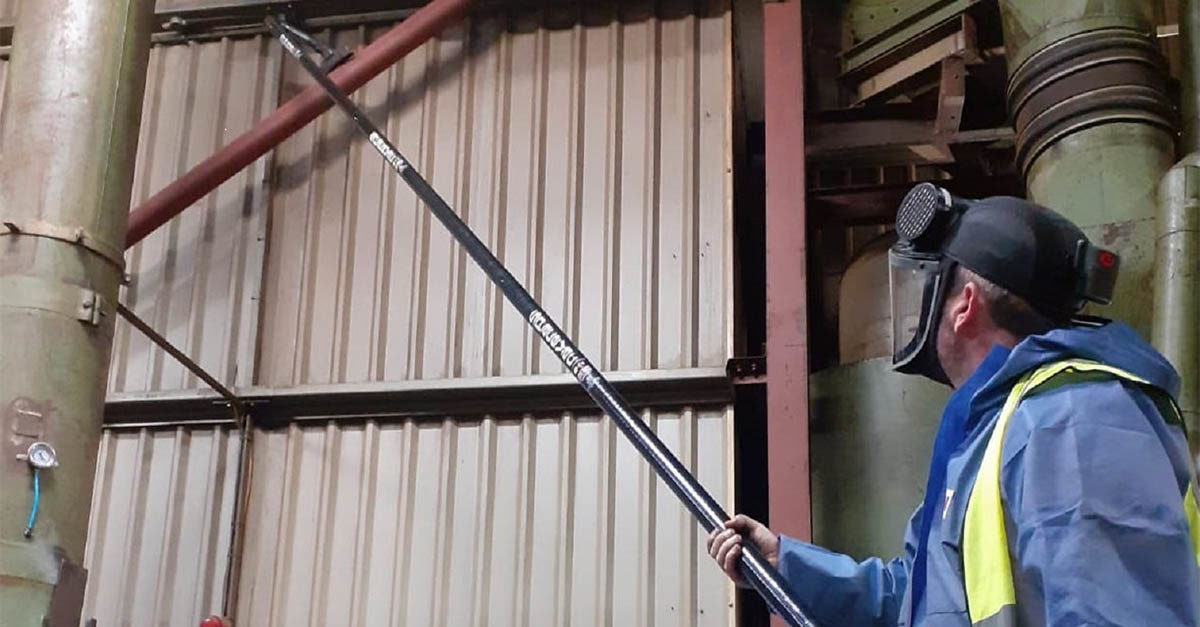Always on the lookout for new ways to expand their offerings, some cleaning professionals now service fulfillment centers—large warehouses where workers pack, ship, and ultimately fulfill customer orders.
Based on recent developments, these cleaning professionals may be onto something big. Amazon, for instance, has a network of 230 fulfillment centers in the United States, with more expected in the coming years. Most major retailers in North America are building or renovating facilities to be used as fulfillment centers.
Creating a clean work environment in a fulfillment center
Before cleaning professionals venture into this new and growing market, there are a few things they should know. First and foremost, they should realize that their role is crucially important to the success of these facilities.
Cleaning promotes safety
Spills, oil or grease residue, scraps of paper, and general clutter are often found on warehouse floors. This accumulation is one of the leading causes of slip-and-fall accidents in these facilities.
Cleaning fosters efficiency
Most fulfillment centers strive for high efficiency rates. Soiled floors, overflowing trash cans, and clutter can lower these rates, and a lack of cleanliness can be distracting to workers. Further, instead of workers being able to go from point A to point C quickly, they must walk around soiled or unsafe point B. This hinders not just the workers but the entire fulfillment operation.
Cleaning enhances morale
The lack of maintenance at a warehouse sends a message to workers. Messy floors—along with dust on shelves, light fixtures, HVAC ducts, and other surfaces—sends a negative message. This can impact morale; workers begin to feel underappreciated, become lax in following company policies, and take less pride in their work.
Cleaning helps improve indoor air quality
Dust also can negatively impact indoor air quality. Many fulfillment centers are 24-hour operations. These extra hours of activity generate more dust and disturb dust on high surfaces, making it airborne. Workers inhale this unhealthy dust, which can cause a variety of respiratory problems, including asthma attacks.
Cleaning can prevent disasters
According to the National Fire Protection Association, an average of 37,000 fires occur at industrial-type properties every year. These incidents result in an average of 18 civilian deaths, 279 civilian injuries, and US$1 billion in direct property damage annually. One of the chief causes of these fires is combustible dust.
Understanding combustible dust
Dust buildup is now viewed as a significant risk for fires in all types of industrial facilities, including distribution and fulfillment centers. If combustible dust comes in contact with an ignition source, it may start a small fire followed by an explosion.
But this is just the beginning of the disaster. As more dust in the facility becomes airborne, it forms a dust cloud that could also ignite, causing a secondary and much more powerful explosion.
According to Stephen Watkins, a mechanical engineer, “If enough dust has accumulated, these secondary explosions have the potential to bring down entire facilities, causing immense damage and fatalities.”
Preventing dust buildup
Because dust buildup can have such severe consequences, preventing its accumulation in warehouses or similar facilities is crucial.
Battery-powered walk-behind or ride-on sweepers are efficient in picking up debris and removing dust from floors. Next, cleaning crews can use automatic scrubbers, or less-costly but effective “auto-vac” cleaning systems, to further clean the floor. However, crews should avoid mopping, as it’s a slow process that becomes more ineffective the dirtier the mop gets.
Just as important as floor maintenance is removing dust from high ledges and fixtures in the warehouse. Manually cleaning these high areas with ladders, scaffolding, or hydraulic platforms is often slow, disruptive, and costly. In addition, this cleaning process can cause dust to become airborne, the opposite of the desired effect.
Instead, cleaning professionals should tackle these high areas using high-reach cleaning systems—high-powered vacuums with long poles and brush attachments specifically designed to clean high surface areas. Selecting a system with lightweight poles makes it even easier to clean especially high spaces.
The most advanced high-reach cleaning systems have a wireless camera attached to one end of the pole and a monitor to the other end. This allows workers to see soiled ledges not visible from the ground, to inspect high surfaces, and to document their work in case an accident does occur.
Having the right tools will be essential for cleaning professionals interested in maintaining fulfillment centers and other warehouses. These tools enhance productivity and safety and produce high-quality results, allowing cleaning contractors to take advantage of this growing market.



